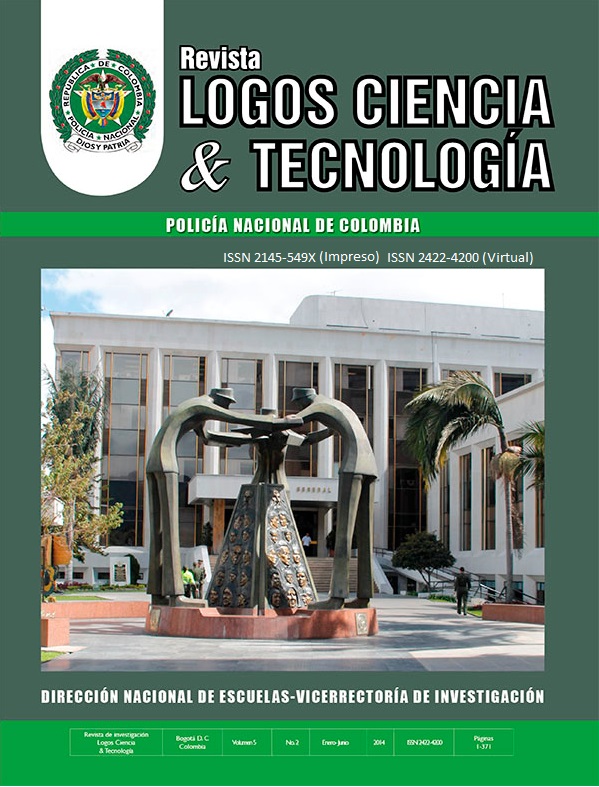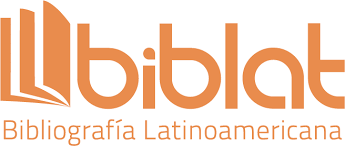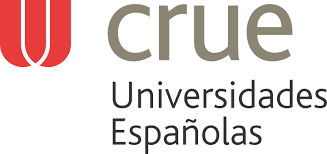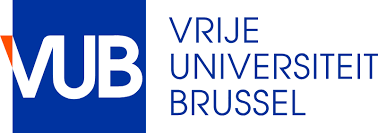Model of arboreal growth of Almendrón species
DOI:
https://doi.org/10.22335/rlct.v5i2.256Keywords:
almendrón, variance, quadratic growth modelAbstract
The article analyzes models of covariance in the estimation of individual and population tree growth curves. The research follows a quantitative inferential approach, the population includes species Almendrón, ten trees per species and a series of width of rings of growth per tree. The series were smoothed by moving averages to maximize the trend due to biological growth. Results: model with random effects associated to each parameter of a second order polynomial was the most efficient in estimating the growth of species. Conclusion: random effects allow to verify the variability of the growth of a species in natural forests.
Downloads
References
Alpizar E.; E. Dechamp, F. Lapeyren Montes, C. Guilhaumon, B. Baertrand, C. Jourdan. et al. (2008). Agrobacterium rhizogenes-transformed roots ofCoffee (C. arabica): Conditions for long-termproliferation and morphological and molecularcharacterization. Ann Bot 101 (7). 929-940.
Azen, S. P. y A. A. Afifi. (1972). Asymptotic and small-sample behavior of estimated Bayes rules for classifying time-dependent observations. Biometrics, 28, 989-998.
Codina Canet, M. A., Olmeda Gómez, C., & Perianes Rodríguez, A. (2013). Analysis of Scientific Production and Research Specialization of the Universidad Politécnica de Valencia, Scopus (2003-2008), 36(3), 17 p. https://doi.org/10.3989/redc.2013.3.942
Guerreiro O.; P. Denolf, M. Peferoen, B. Decazy, A. Eskes and R. Frutos. (1998). Susceptibility of the Coffee Leaf Miner (Perileucoptera spp) to B.thuringiensis -endotoxins: A model for transgenic perennial crops resistant to endocarpic insects. Current Microbiology 36. 175-179.
Graybill, F. A. (1976) Theory and Application of the Linear Model. Wadsworth Publishing Company. 704
Contreras Bello, Y. (2012). Los elementos de la investigación: como reconocerlos, diseñarlos y construirlos. Autor: Hugo Cerda Gutiérrez. Colombia: Editorial Magisterio, 2011, 521 pp. Revista Logos Ciencia & TecnologíA, 4(1), 220-221. Recuperado de http://revistalogos.policia.edu.co/index.php/rlct/article/view/183/194
Contreras Bello, Y. (2012). Bases de la Investigación Cualitativa, técnicas y procedimientos para desarrollar una teoría fundamentada. Autores: Anselm Strauss y Juliet Corbin. Universidad de Antioquia, Colombia, 2012. Revista Logos Ciencia & Tecnología, 3(2), 172-173. doi:http://dx.doi.org/10.22335/rlct.v3i2.166
Giménez, A.M.; Ríos N.A.(1999). Crecimiento de Schinopsis Quebracho colorado (Schlecht.) Barkl et meyer, Anacardiaceae. Madera y Bosques 5(2). 35-51.
Kaweesa, S. H., Jonkvorst, R. J., Katebaka, R., Ssemmanda, R., Pomeroy, D., & Brouwer, J. (2013). Is the Hamerkop Scopus umbretta a neo-colonist or an opportunist nester? Scopus, 32, 35–38.
Kanno T.; S. Naito and K. Shimamoto. (2000). Posttranscriptional Gene Silencing in Cultured Rice Cells. Plant Cell Physiol 41 (3): 321-326.
Leroy T.; A. Henry, M. Royer, I. Altosaar, R. Frutos and R. Phillipe. (2000). Genetically modified coffee plants expressing the B. thuringiensis cry1Ac genefor resistance to leaf miner. Plant Cell Rep 19: 382-389.
Libiakova G.; B. Jorgensen, G. Palmgren, P. Ulvskor and E. Johansen. (2001). Efficacy of an introncontainingkanamicin resistance gene as a selectable marker in plant transformation. Plant Cell Rep 20: 610-615.
Littell, R. C.; G. A. Milliken; W.W. Stroup y R. D. Wolfinger. (1996).
SAS System for Mixed Models. Cary, N.C.: SAS Institute Inc.633pgs.
Miranda, H. I. C., Aguiar, P. R., Euzebio, C. D. G., & Bianchi, E. C. (2010). Fuzzy logic to predict thermal damages of ground parts. Scopus, 434–441.
Núñez-Lagos Roglá, R. (2011). La radioactividad ambiental. Revista Logos Ciencia & Tecnología, 2(2), 50-61. doi:http://dx.doi.org/10.22335/rlct.v2i2.82
Pereira dos Anjos, M. (2010). El urbanismo en las ciudades latinoamericanas y la cooperación en la gestión urbana entre Brasil y Colombia. Revista Logos Ciencia & Tecnología, 1(2), 152-156. doi:http://dx.doi.org/10.22335/rlct.v1i2.55
Ramos Moreno, A., Mayor Polanía, R., Ortiz P, N., & Tovar Pérez, L. (2012). La diversidad en aves como factor determinante de la interacción entre ecosistemas del departamento del Huila. Revista Logos Ciencia & Tecnología, 3(2), 45-58. doi:http://dx.doi.org/10.22335/rlct.v3i2.158
Ruiz-Sánchez, M.C., Torrecillas, A., DelAmor, F., León, A. y Abrisqueta, J.M. 1988. Leaf water potential and leaf conductance during the growingseason in almond trees under different irrigation regimes. Biologia Plantarum (30):327-332
Simonneau, T., Habib, R., Goutouly, J.P. y Huguet, J.G. 1993. Diurnal changes in stem diameter depend upon variations in water content: direct evidence in peach trees. Journal of Experimental Botany (44):615-621.
Syvertsen, J.P., Lloyd, J. y Kriedemann, P.E. 1988. Salinity and drought stress effects on foliar ion concentration, water relations, and photosynthetic characteristics of orchard citrus. Australian Journal of Agricultural Research (39):619-627.
Smallie, J., & Virani, M. Z. (2010). A preliminary assessment of the potential risks from electrical infrastructure to large birds in Kenya. Scopus, 30, 32–39. https://doi.org/10.2193/2008-525
Tabuenca, M.C. y Herrero, J. 1966. Influencia de la temperatura en la época de floración de los frutales. An Aula Dei (8):115-153.
Tardieu, F. y Simonneau, T. 1998. Variability among species of stomatal control under fluctuating soil water status and evaporative demand: modelling isohydric and anisohydric behaviours. Journal of Experimental Botany (49):419-432.
Torrecillas, A., Domingo, R., Galego, R. y Ruiz-Sánchez, M.C. 2000. Apricot tree response to withholding irrigation at different phonological periods. Scientia Horticulturae (85):201-215.
Tunjano Huerta, C., & Calvo Valencia, D. (2011). Evaluación de sustancias fitoprotectoras usadas como estrategia de neutralización de la acción del glifosato sobre cultivos de erythroxylum coca. Revista Logos Ciencia & Tecnología, 2(2), 26-31. doi:http://dx.doi.org/10.22335/rlct.v2i2.79
Yohannes, E., Nikolaus, G., & Pearson, D. J. (2013). Stable isotopes of soil collected from feet of two species of migratory Acrocephalus give clues to stopover sites. Scopus, 32, 1–9.
Vanegas, A. y Ospina A.M. Colombia: Editorial Ibáñez (2013), Revista Logos Ciencia & Tecnología, 4(2), 168-169. Recuperado de http://revistalogos.policia.edu.co/index.php/rlct/article/view/200
Vélez, J.E., Intrigliolo, D.S. y Castel, J.R. 2007. Scheduling deficit irrigation of citrus trees with maximum daily trunk shrinkage. Agricultural Water Management (90):197-204.
Vonesh, E. y Chinchilli, V. (1997). Linear and nonlinear models for the analysis of repeated measurements. Statistic textbooks and Monographs, Inc. New York Ed. Marcel Dekker, 560
Wolfinger, R. D. y O’Connell, M. (1993). Generalized linear mixed models: a pseudo-likelihood approach. J. Statist. Comput. Simul. 48:233-243.
Zeger, S. L.; K. Y. Liang y P. S. Albert. (1988). Models for longitudinal data: A generalized estimating equation app
Downloads
Published
Issue
Section
License
This journal provides free and immediate access to its content (https://creativecommons.org/licenses/by/4.0/legalcode#languages), under the principle that making research available to the public free of charge supports greater global knowledge exchange. This means that the authors transfer the Copyrights to the journal, so that the material can be copied and distributed by any means, as long as the authors’ recognition is maintained, and the articles are not commercially used or modified in any way.
































